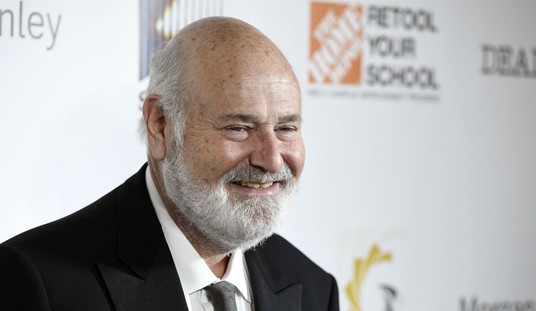US residents living in the deep South woke up to snow on their lawns last week, compliments of a precocious storm that formed over the Midwest, dragging down cold Canadian air. It even caught forecasters by surprise.
Scarcely a few weeks have passed since Hurricane Melissa menaced the East Coast. Crossing over Jamaica and leaving death and misery behind, it quickly diminished in strength into a weakened extra-tropical storm. It turned northeastward into the cooler waters of the North Atlantic. Bermuda was spared from what had once been a Category 5 hurricane two days earlier.
Hadn’t these same experts prognosticated a “very active” 2025 hurricane season in May? And thus inspiring high expectations for another season of monster storms. It now appears that the final total for named tropical storms numbered only 12, with no Katrina or Wilma making a US landfall. Long-range forecasting is still a game of educated guessing, not an exact science. Joe Bastardi of Weather-Bell Analytics often comes closer than the experts at the National Hurricane Center with his pattern analysis.
When the experts learn to harness AI, reliable predictive models may become a reality.
For starters, the equatorial Pacific Ocean determines large-scale circulation patterns that enhance the jet stream eastward across Central America over the Gulf of Mexico. But the timing of the shifts is highly unpredictable.
Recommended
The El Niño phase creates a persistent southern jet that disrupts budding circulation over warm waters. In the absence of the jet, a gathering carousel of thunderstorms may develop into an expanding tropical storm, then into a full-blown hurricane. The jet will often rip apart a potential hurricane before it gains traction.
Several nascent storms formed this year off the Canary Islands. Each time, a chorus of cheerleaders announced the coming of the next super-hurricane. But they were disappointed when the next candidate fizzled out or was directed northward over the cold waters of the North Atlantic. And few storms managed to evade the blocking high pressure that protected our eastern seaboard.
Finally, a solitary October storm managed to elude the shear and developed into a major hurricane (Category 5) before it crossed Jamaica. The death toll from Melissa, not fully determined, reached about 50.
Uncharted hurricanes of past centuries would have exacted severe tolls on the indigenous populations of what is now Central America, and without the benefit of warning. The Great Galveston Storm of 1900 took an estimated 10,000 lives.
With December soon upon us, the hurricane season will have drawn to its close.
Mother Nature has already released her first major winter storm. An early snowstorm blew across the eastern two-thirds of the US as temperature records fell at hundreds of locations. Temps dropped from the comfortable 60s and 70s into the mid- and lower-20s as far south as the Gulf Coast on November 10 and 11.
But we ought not make more out of an outbreak of unruly weather to contrast with the milder patterns we have become accustomed to. I would not venture to predict whether more of these vigorous winter storms will follow after a brief interlude of warmer weather as a late Indian summer.
Nearly forgotten is the Great Armistice Day Storm of 1940 that struck the upper Midwest on November 11 and 12 of that year. Some 160 deaths were attributed to the storm. About half were duck hunters who went out in the morning expecting bluebird weather. Instead, they were caught in the record early-season blizzard. The storm began several days earlier as a Pacific coastal squall that triggered the collapse of the Tacoma Narrows bridge.
What will happen as actual winter progresses is a guess. But last week’s storm may have a connection with the hurricane that never quite arrived on US shores and instead died in the graveyard for tropical storms that trend northeast from the Caribbean into the North Atlantic.
As I write, the usual suspects are gathered in Brazil for the UN COP30, where delegates representing the international community of countries meet every few years. Those gathered say that climate change is a threat to the future of the human race and the life on our planet.
It is interesting that Bill Gates, a longtime champion of restricting global warming, recanted his extreme positions concerning the necessity of limiting carbon dioxide as an existential threat. The global-warming alarmists like to blame CO2 for a coming runaway greenhouse.
Never mind the fact that CO2 levels in the remote geological past far exceeded any that might reasonably be expected in the foreseeable future. Since those high levels that occurred many millions of years ago did not drive the atmosphere into a runaway greenhouse, it is very unlikely that such a recurrence would trigger any runaway event going forward—even allowing for intervening changes in the chemical composition of the modern atmosphere.
So the spectacle repeats of thousands of well-accommodated representatives flying into Brazil (at considerable expense to their impoverished constituents) all working hard to contrive strategies for the purpose of extorting cash from the citizens of First World countries.
For those island nations with an average elevation of a few feet above sea level, the more pressing issue is whether a rising global temperature would cause significant expansion of ocean water, leading to an accelerated sea level rise. The globally distributed network of tide gauges located in stable harbors suggests otherwise.
But never fear, the outcome of COP-30 is unlikely to achieve unanimity among the key players. The “developing” countries of China, Brazil and India have no intention of agreeing to meaningful cuts in their CO2 emissions. This stalemate renders cuts previously agreed to by many Western nations as mere empty gestures.
In reality, the proposals all amount to an extravagant solution to a non-existent problem.


